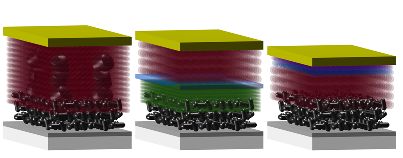| Data and Time |
Jan. 31 , 2012, 3:00-4:00 PM |
| Location |
Sanford Fleming Building (SF), Room B560
|
| Host |
Alex Wong |
Architectures for Colloidal Quantum Dot Photovoltaics

Illan Kramer
The Edward S. Rogers Sr. Department of Electrical and Computer Engineering (Photonics)
Abstract:
Colloidal quantum dots (CQDs) are nanometer scaled semiconductor crystals that are synthesized in, processed with, and deposited from solution. These materials offer a new paradigm for optoelectronics; one in which materials properties are not strictly material dependent, but are also influenced by physical dimension. With CQDs, optical absorption ranges can be tuned by adjusting the size of the nanoparticles on the Angstrom length scale. For photovoltaics, this enables facile access to much broader swaths of the Sunís spectrum than is accessible through conventional photovoltaic materials such as silicon and gallium arsenide. Working with CQDs, however, is not without its challenges. These materials demand additional considerations that need to be taken into account when developing solar cell architectures.
My talk will focus on the device architectures we have developed in the Sargent Group. Architectural considerations include issues such as contact geometry, length-scale engineering and materials selection. Taken together, these dictate how to develop solar cells that highlight the potential of CQDs as solar harvesters while limiting their flaws.
The interested reader is referred to http://pubs.acs.org/doi/full/10.1021/nn203438u for more background information.
Biography:
Illan Kramer received is B.A.Sc. and M.Eng degrees at the University of Waterloo in Electrical Engineering (international studies option) and McGill University in Electrical Engineering, respectively. While at McGill, he worked on silicon and hybrid silicon/organic photovoltaics with Prof. Ishiang Shih. Illan is currently a PhD student in Ted Sargentís group in Electrical Engineering at the University of Toronto developing photovoltaics using colloidal quantum dots. His research focus is primarily on the development of novel device architectures to showcase the features and mask the limitations of this new materials system.
|
|
|